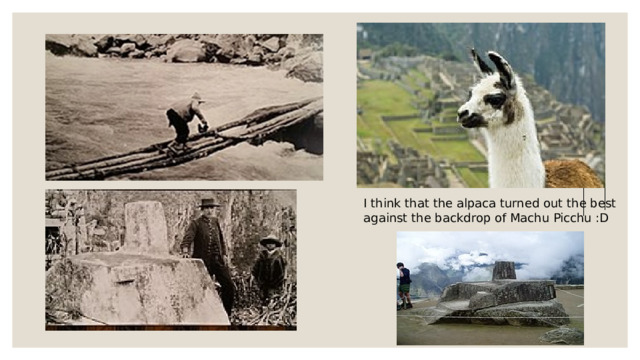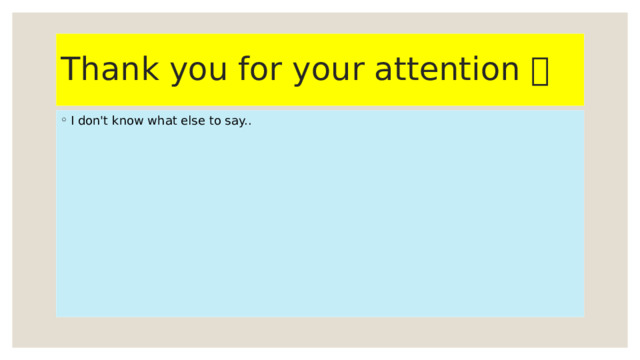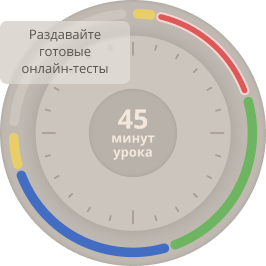
history Machu picchu
Prepared: Polina Tyrina

Where is Machu Picchu?
- Machu Picchu, also spelled Machupijchu, site of ancient Inca ruins located about 50 miles (80 km) northwest of Cuzco, Peru, in the Cordillera de Vilcabamba of the Andes Mountains. It is perched above the Urubamba River valley in a narrow saddle between two sharp peaks—Machu Picchu (“Old Peak”) and Huayna Picchu (“New Peak”)—at an elevation of 7,710 feet (2,350 metres). One of the few major pre-Columbian ruins found nearly intact, Machu Picchu was designated a UNESCO World Heritage site in 1983.

History..
Although the site escaped detection by the Spaniards, it may have been visited by the German adventurer Augusto Berns in 1867. However, Machu Picchu’s existence was not widely known in the West until it was “discovered” in 1911 by the Yale University professor Hiram Bingham, who was led to the site by Melchor Arteaga, a local Quechua-speaking resident. Bingham had been seeking Vilcabamba (Vilcapampa), the “lost city of the Incas,” from which the last Inca rulers led a rebellion against Spanish rule until 1572. He cited evidence from his 1912 excavations at Machu Picchu, which were sponsored by Yale University and the National Geographic Society, in his labeling of the site as Vilcabamba; however, that interpretation is no longer widely accepted. (Nevertheless, many sources still follow Bingham’s precedent and erroneously label Machu Picchu as the “lost city of the Incas.”) Evidence later associated Vilcabamba with another ruin, Espíritu Pampa, which was also discovered by Bingham. In 1964 Espíritu Pampa was extensively excavated under the direction of the American explorer Gene Savoy. The site was much deteriorated and overgrown with forest, but Savoy uncovered remains there of some 300 Inca houses and 50 or more other buildings, as well as extensive terraces, proving that Espíritu Pampa was a much larger settlement.

Appearance features
- The high level of preservation and the general layout of the ruin are remarkable. Its southern, eastern, and western portions are surrounded by dozens of stepped agricultural terraces formerly watered by an aqueduct system. Some of those terraces were still being used by local Indians when Bingham arrived in 1911. Walkways and thousands of steps, consisting of stone blocks as well as footholds carved into underlying rock, connect the plazas, the residential areas, the terraces, the cemetery, and the major buildings. The Main Plaza, partly divided by wide terraces, is at the north-central end of the site. At the southeastern end is the only formal entrance, which leads to the Inca Trail.

First American expedition
Bingham was a lecturer at Yale University, although not a trained archeologist. In 1909, returning from the Pan-American Scientific Congress in Santiago, he travelled through Peru and was invited to explore the Inca ruins at Choqquequirau in the Apurímac Valley. He organized the 1911 Yale Peruvian Expedition in part to search for the Inca capital, which was thought to be the city of Vitcos. He consulted Carlos Romero, one of the chief historians in Lima who showed him helpful references and Father Antonio de la Calancha’s Chronicle of the Augustinians. In particular, Ramos thought Vitcos was "near a great white rock over a spring of fresh water." Back in Cusco again, Bingham asked planters about the places mentioned by Calancha, particularly along the Urubamba River. According to Bingham, "one old prospector said there were interesting ruins at Machu Picchu," though his statements "were given no importance by the leading citizens."

I think that the alpaca turned out the best against the backdrop of Machu Picchu :D

Inti Mach'ay and the Royal Feast of the Sun
- Inti Mach'ay is a special cave used to observe the Royal Feast of the Sun. This festival was celebrated during the Incan month of Qhapaq Raymi. It began earlier in the month and concluded on the December solstice. On this day, noble boys were initiated into manhood by an ear-piercing ritual as they stood inside the cave and watched the sunrise.

Thank you for your attention
- I don't know what else to say..



































